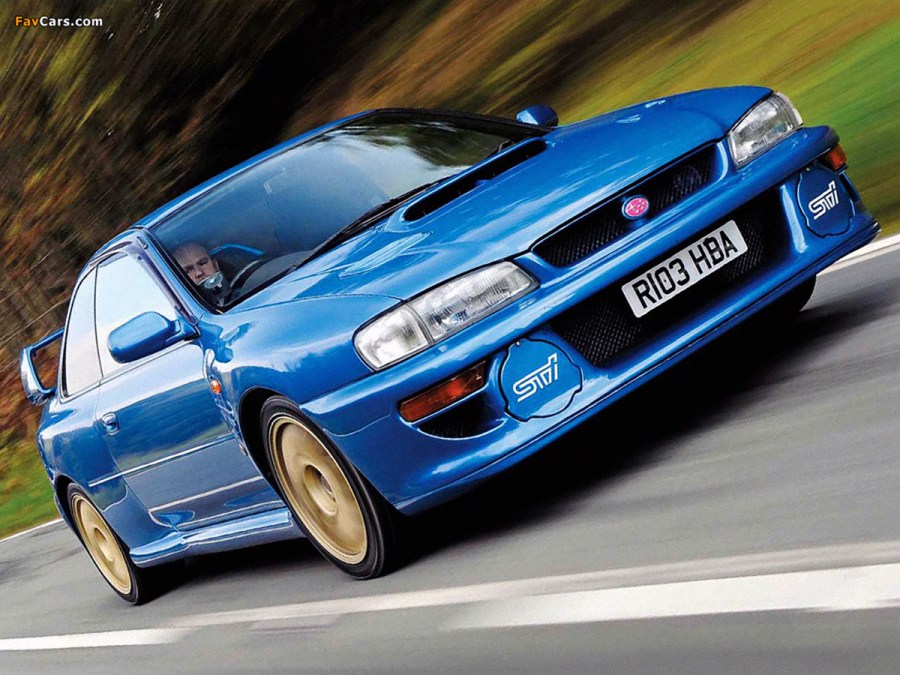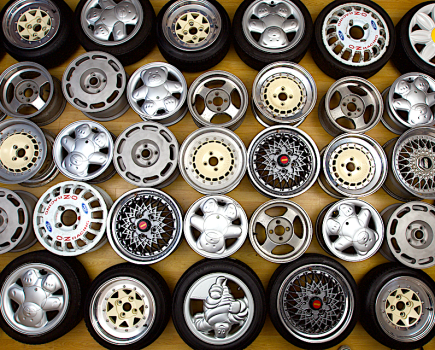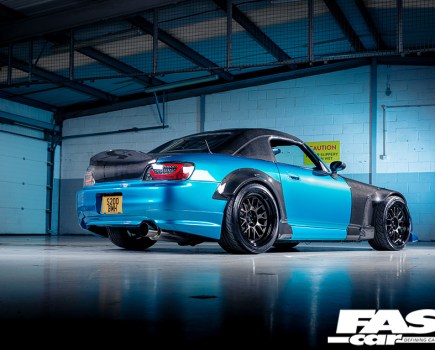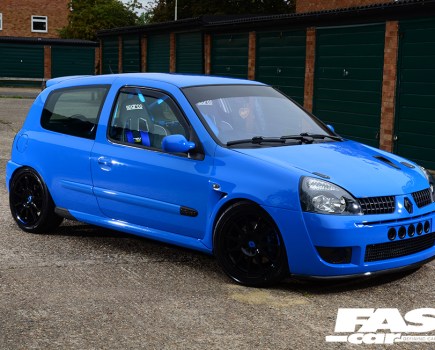The original Subaru Impreza WRX STI GC8 is a performance car classic. Packed with genuine racing pedigree it dominated the rally stages and also the streets. Here’s what to look out for if you want to buy a beauty.
Launched into the consciousness of petrolheads the world over by the talented peddling of Colin McRae on the tortuous stages of the World Rally Championship, the original GC8 Impreza became a rallying icon. This legendary lineage was immediately apparent in the road-going versions too, with the car being blessed with a communicative chassis, potent performance, otherworldly grip and a sensible price tag that made it one of the fastest and best value performance cars of the ‘90s. Today, its lightweight, ferocious AWD system and tuneable power make it one of the best used cars to buy if you want to have fast fun.
The first Impreza WRX went on sale in Japan in November 1992 with 237bhp from its 2.0-litre turbocharged EJ20 flat-four boxer engine, with the first 208bhp UK Turbo 2000 models arriving in March 1994. Meanwhile the original Impreza WRX STI was launched in Japan in January 1994, with factory WRXs taken to the Subaru Tecnica International (STI) tuning works to have a more powerful, blueprinted engine fitted, plus an uprated intercooler with water spray, a revised exhaust, larger rear spoilers, a front strut brace, uprated brake pads, Stiffer STI springs and revised dampers and STI seats.
Both saloons and five-door wagons were produced along with a WRX Type RA (Race Altered) STI model – based on the stripped out WRX Type RA saloon. And from January 1997 there was also a two-door Impreza, the WRX STI Type R.
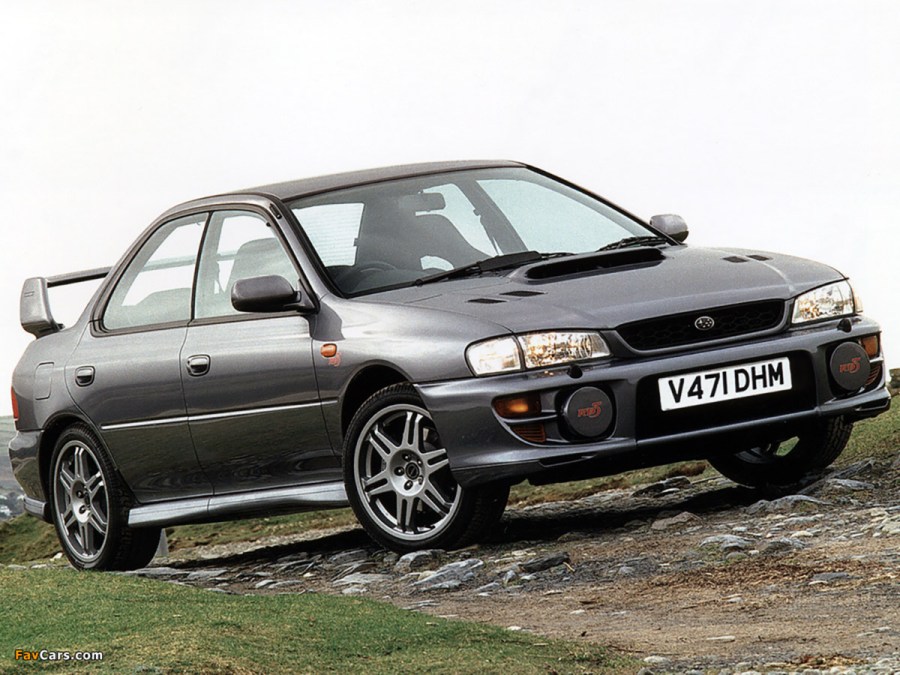
Special editions
Subaru released six versions of the Impreza WRX, STI and Turbo 2000 over its eight year production cycle, with power outputs rising steadily with each subsequent version up to the Japanese gentleman’s agreement of 280bhp in the range topping STI models. UK models from 1996 on also had the option of Prodrive power packs and other Prodrive goodies too with special editions including the Series McRae, Catalunya, Terzo, RB5 and two-door P1.
Japanese rally-focused Type RA and Type R cars featured a roof vent and a driver controlled centre differential (DCCD) with a mechanical rear limited-slip diff. The famous red induction manifold was introduced on the STI II, whilst the STI III intercooler was positioned flat under the bonnet scoop rather than at an angle.
In March 1998 the WRC-aping Impreza WRX STI Type 22B arrived, with a special 2.2-litre engine it was produced as a limited run of just 426 vehicles, of which only 70 actually made it to UK shores (only 16 officially) making this rare breed one of the most valuable and collectable Imprezas on the planet. Classic Impreza production finally ended in 2000 after the final classic shape model was launched in 1999. Known as the S201, it was a suitable farewell for this iconic model with a limited run of just 300 modified STI RA version VI cars with wild body-kit and a 300bhp engine (a power output which was allowed as special variants were excluded from the gentlemen’s agreement). The second generation, or New Age, Impreza came at the end of 2000, with a completely new ‘bugeye’ bodyshell.
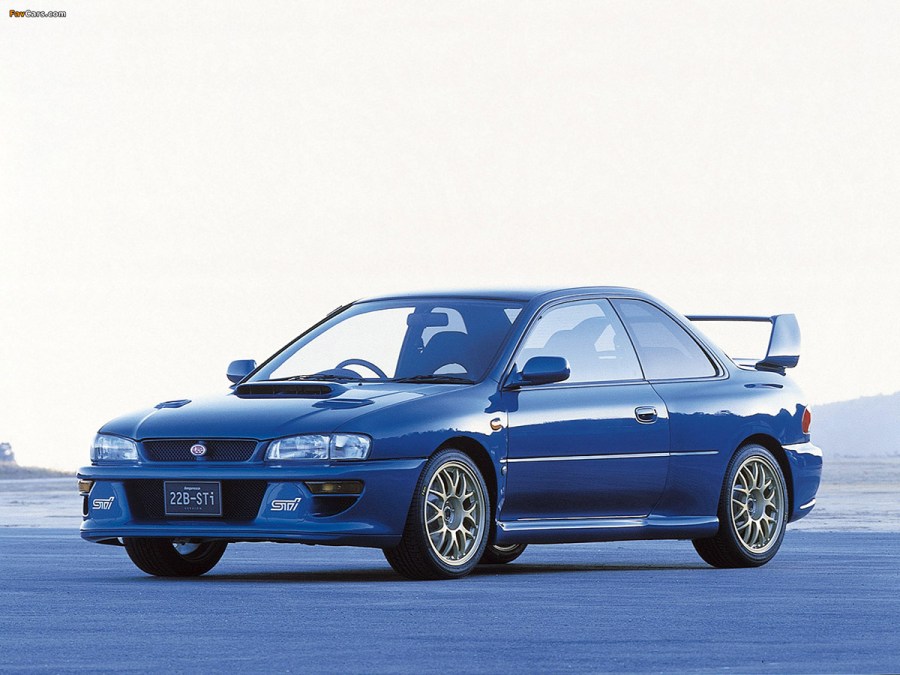
Subaru Impreza WRX STI GC8 most common problems
- Oil leaks – The GC8’s EJ20 is known to suffer from oil leaks from old and perished camshaft and valve cover gaskets and seals. Be sure to check oil levels regularly and top up when necessary, while also visually inspecting the engine for signs of oil leaks and for any oil spots under the car after being parked up for a while.
- Worn piston rings – Identified by excessive oil consumption and a smoky exhaust, piston rings that are worn are a common issue on EJ20 engines and will require an expensive rebuild to fix.
- Poor cylinder cooling – Cylinder number 4 is the common culprit and often presents as a tapping noise when the engine is cold. This will eventually get worse to the point that the noise will be constant and an engine rebuild imminent.
- Sticking calipers – Early cars have single-piston rear brake calipers that are well known for seizing and Sticking on. Luckily, if you notice a caliper is binding, both replacement parts and full caliper rebuild kits are readily available and not overly expensive.
- Corrosion – Getting on for 30 years old now, with imported Japanese models not always receiving underseal from the factory, and many having been repaired or abused over the years, it’s no surprise that Imprezas can suffer from rust. Areas most at risk are the rear wheel arches, and the rear strut turrets, which can also affect the car’s structural integrity.
Pros
- 2.0-litre turbocharged EJ20 boxer engine sounds incredible and has plenty of punch, especially in later STI or special edition models, with scope for much more power when tuned
- Rally-bred handling from the all-wheel-drive system gives oodles of grip in all conditions, making the Impreza one of the fastest point-to-point cars around
- Arguably the prettiest Impreza shape, especially in two-door and wide arched 22B specification, with true mud-plugging pedigree
Cons
- Engines are known to leak oil and will require precise servicing to stay reliable. Using low grade fuels and poor maintenance will end in an expensive engine rebuild
- High road tax brackets and fuel consumption levels means even the most basic of running costs can be extremely expensive
- Although functional and long lasting, the GC8’s factory interiors are pretty dull and plasticy, with seat coverings, cup holders and glove boxes all likely to be showing signs of wear
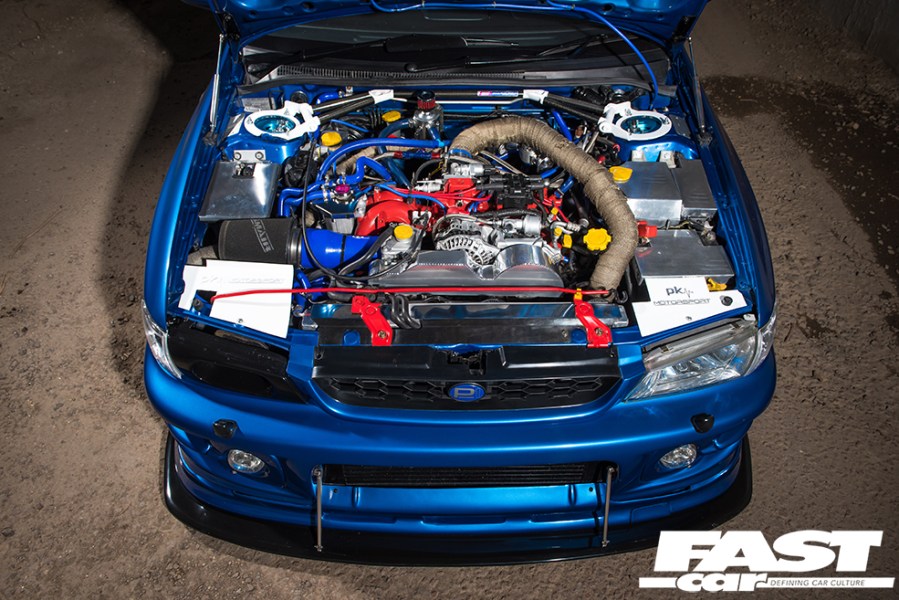
Engine
The EJ20 boxer engine is a potent unit that’s ripe for tuning, but it will not tolerate a lack of proper maintenance. This is why, any Impreza you are considering must possess a full service history, showing oil changes every 7500 miles or six months and a new cambelt and tensioner every three years or 45k-miles. Any knocking could indicate piston slap, worn piston rings or bottom end damage, whilst remapped cars must have been tuned by a reputable company, as poor mapping can quickly lead to expensive engine damage.
Most examples have had a sports exhaust fitted, but a catalyst will be needed to pass the MoT emissions test. New spark plugs, brake fluid, transmission and diff oil are required every couple of years and the turbo should be smoke free and quiet, unless a decat downpipe is fitted, which will make it sound louder. All classic Imprezas must be run on the highest octane fuel possible, so ask the seller what they commonly fill up with. When viewing a potential purchase, check for oil leaks, that the oil level is at the required amount and there are no traces of oil in the coolant.
Transmission
With four-wheel-drive traction and a powerful torque-rich motor, clutches inevitably take a lot of abuse and most end up lasting a lot less than 40k miles. A new one is around £700 plus four or five hours labour to fit. Clutch judder is pretty common, especially when cold or if an uprated unit has been fitted, but Impreza gearboxes are surprisingly tough. On the test drive, listen for noises from the rear diff that could suggest it’s on its way out – this may be more noticeable when reversing. Although notchy and agricultural, all gears should slot home without issue, as any crunching or grinding could suggest either a worn clutch or synchromesh.
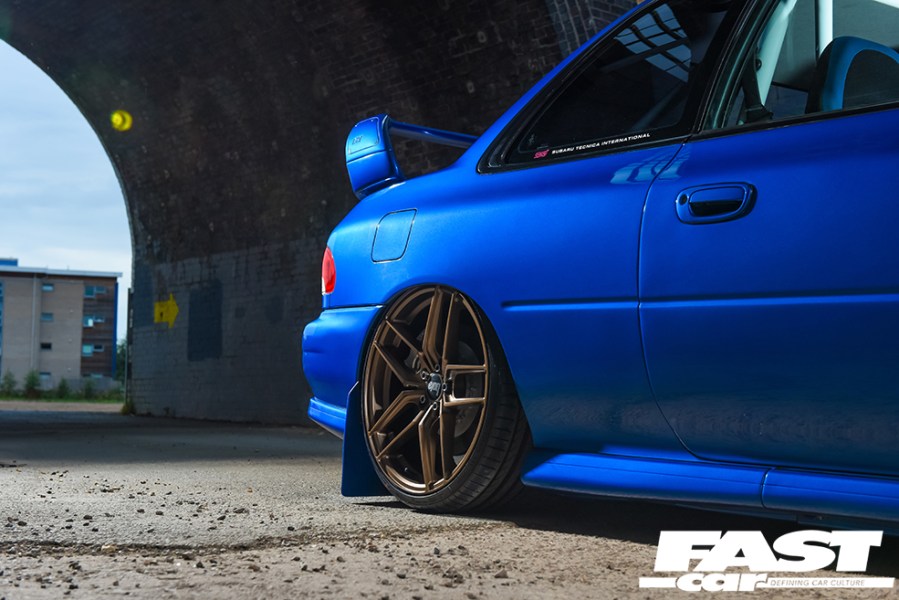
Subaru Impreza WRX STI GC8 Chassis
Suspension
Designed to take on the rigours of the world’s harshest rally terrains, Impreza’s have excellent suspension that stands up to high levels of abuse. Saying that, after more than 30 years on early cars, it will eventually need replacing. Strut top-mounts and anti-roll bar bushes often perish and dampers will start to sag at high mileages. Worn anti-roll bar bushes make a clonking sound and cheap lowering springs can adversely affect the balance and handling of the car. Quite a few owners have opted for more expensive aftermarket suspension setups including various coilover kits. Make sure any suspension upgrades or replacements have been set-up properly, tell tales signs of a bodged alignment will often show as inconsistent tyre wear.
Brakes
Considering the car’s high level of capability, the WRX and Turbo 2000’s factory discs and pads aren’t that great, particularly when it comes to track days, where they can soon overhead and start to fade. STI’s have slightly better stoppers from the factory, but even these are often left wanting, so many owners will have already fitted uprated items, often with stainless brake hoses and DOT 5.1 fluid. On the test drive, check for any juddering or pulling through the steering wheel under heavy braking and inspect the discs to see there is plenty of life left in them and there are no cracks or corrosion. Rear brakes will often stick on if the car is left parked up for any length of time, but this is a relatively easy fix.
Wheels and tyres
Subaru Impreza WRX STI GC8 cars came with 16in and 17in wheels from the factory, but many owners will have fitted larger 17in or 18in aftermarket alloys. Whatever wheels are fitted, make sure to inspect them for any signs of kerb damage and corrosion and make sure that matching quality tyres have been fitted. Typical tyre life is between 8000-15,000 miles, unless the car has been taken on track, which can reduce this lifespan draSTIcally. Check that there is plenty of tread depth left and that there are no bulges or cracks in the sidewalls. 18in alloys are usually heavier and on standard suspension may upset the ride quality.
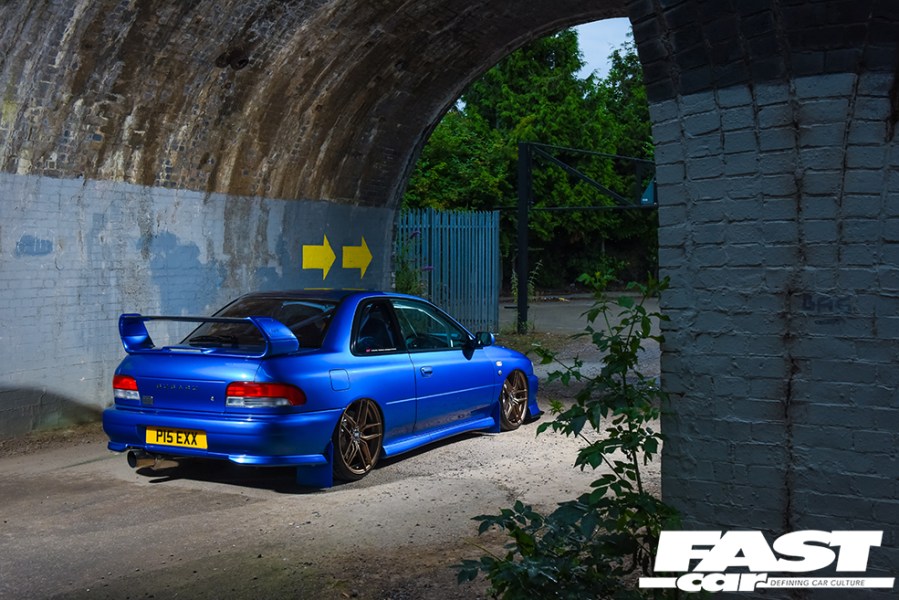
Subaru Impreza WRX STI Prices
- 1998 Subaru Impreza WRX STI – 91,000 miles – $22,000
- 1995 Subaru Impreza WRX– 107,000 miles – $27,000
- 1997 Subaru Impreza WRX STI – 114,000 miles – $15,750
- 2000 Subaru Impreza WRX STI Type RA– 62,000 miles – £36,995
- 1997 Subaru Impreza WRX STI Type R – 63,000 miles – £24,995
- 2000 Subaru Impreza WRX STI wagon – 97,439 miles – £19,995
Subaru WRX STI Model Timeline
- 1992 – Impreza WRX went on sale in Japan in November
- 1994 – First Subaru Impreza Turbo 2000 launched in UK, Impreza WRX STI launched in January
- 1995 – Impreza STI II launched. Stripped out Type RA plus limited edition 4 and 5-door 555 and V-limited saloons follow.
- 1996 – Facelifted MY1997 UK Impreza Turbo 2000 arrives in October. STI III version launched with 555 and V-limited special editions. First STI Type R Coupe follows with a limited-edition Yellow Signature version.
- 1997 – Facelifted MY1998 UK Impreza Turbo 2000 arrives in October. STI IV debuts in Japan
- 1998 – STI Type R 22B limited edition launched with 2.2-litre engine and bespoke bodywork. Just 16 examples are officially imported into the UK. Also STI version V is launched
- 1999 – Impreza STI VI appears in Japan. Limited edition 300bhp S201 launched
- 2000 – Production of first-generation Subaru Impreza ends in June, as ‘new-age’ Impreza launched
Words: Dan Sherwood.

